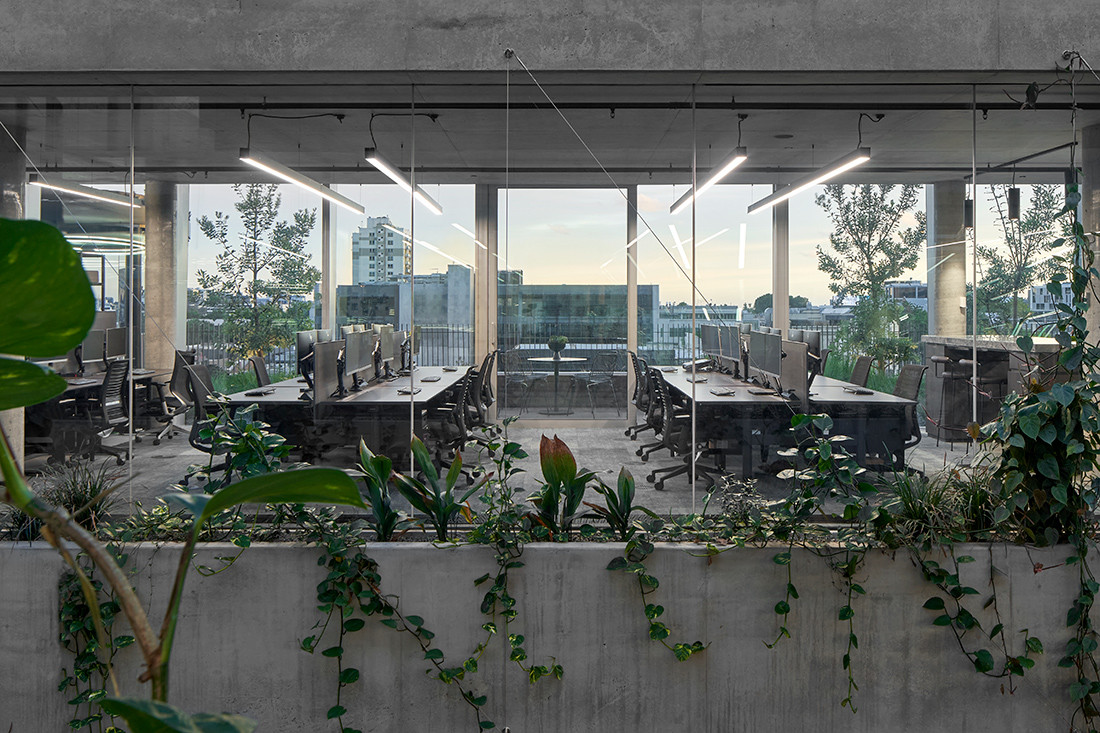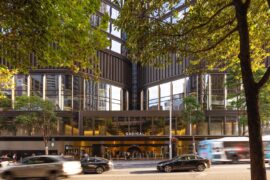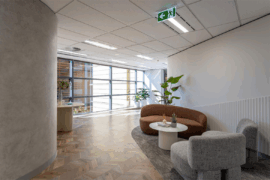Speculation over if the world will realise a ubiquitous return to office sometime in the foreseeable future is superfluous, going by the contents of Cushman & Wakefield’s latest report – the real question is when?

Market Lane by Elenberg Fraser for Hickory Group. Photo: Sandra Tan
October 21st, 2021
As one of the most prominent commercial real estate moguls, Cushman & Wakefield is well attuned to the macro-scale shifts and trends steering the corporate world at any given time. From this unique vantage point, the corporate behemoth boasts the resources, insight and undeniable authority to go about predicting the future of office-based work. Case in point is the firm’s most recent global office forecast, Predicting the Return to Office.
Released in September 2021, the report is the first to come from Cushman & Wakefield in a 3-part series examining when, why and how we can expect to realise a post-pandemic return to the office. Vying to gain a sense of certainty and convey realistic projections that will help guide the commercial world back into centralised office work, the report weighs up current global and regional office occupancy rates, government imposed mandates, patterns of pandemic spread to date and COVID-19 vaccination rates, both present and projected, as the rationale behind when we can expect to go back to previous norms of work.
According to the report, China remains at the fore of the global pandemic – now in much more positive light, having surpassed the milestone of becoming a 70 percent fully vaccinated population and with office attendance already reported to be back on par with that of pre-pandemic times. Those in the United States and Europe are predicted to be the next to see a significant return to office, with Cushman & Wakefield placing its bets on the beginning of 2022.
Where Cushman & Wakefield’s Predicting the Return to Office report falls short is its broad brush approach to covering the Asia Pacific region. The authors preface the APAC section of the report by addressing this flaw, point blank.
‘Undertaking an effort to predict the return to office and trying to provide an all-encompassing view is fraught with difficulty for a region as diverse as Asia Pacific. There is a raft of different experiences, government policies and cultural norms that continue to affect day-to-day living, all overlaid with the varying trajectories of virus transmission and vaccination coverage.’
As it stands, we’re on track to achieve herd resiliency—i.e., over 70 percent of the population either vaccinated or infected—at large, by Q2 2022. In September of 2021, approximately 40 percent of all global office workers have returned to the office. China is leading the return with over 90 percent back, with all other regions examined in the study fall between 27 and 40 percent of employees in the office on any given day.
Provided its assumptions hold true, Cushman & Wakefield concludes that the majority of the world’s office-based workforce will be able to return to the office in the first quarter of 2022. Regionally, the return will be led by Greater China, followed by Europe, then the U.S., Canada, and last but not least the Asia Pacific region, with timing varying per country.
With all this in mind, it’s time to start thinking: are you ready to return to the office? Better yet, is your office ready for you?
Download and read the full Predicting the Return to Office report by Cushman & Wakefield, here.
Get more Indesign insights on the future of workplace, here.
INDESIGN is on instagram
Follow @indesignlive
A searchable and comprehensive guide for specifying leading products and their suppliers
Keep up to date with the latest and greatest from our industry BFF's!

From the spark of an idea on the page to the launch of new pieces in a showroom is a journey every aspiring industrial and furnishing designer imagines making.

Rising above the new Sydney Metro Gadigal Station on Pitt Street, Investa’s Parkline Place is redefining the office property aesthetic.

A thoughtful, low-waste redesign by PMG Group in collaboration with Goodman has transformed a dated office into a calm, contemporary workspace featuring a coastal-inspired palette and Milliken flooring for a refined finish.

Making a splash on the hair spa scene, the latest project from X + O makes a little slice of Japan right at home in suburban Melbourne.

The World Architecture Festival has named The Holy Redeemer Church and Community Centre of Las Chumberas in La Laguna, Spain as World Building of the Year 2025, alongside major winners in interiors, future projects and landscape.
The internet never sleeps! Here's the stuff you might have missed

Community, Country and climate were centred at the 2025 Australian Institute of Landscape Architects (AILA) Awards in Lutruwita/Tasmania on 21st October.

Poised at the intersection of design and service, King Trade has launched a new dedicated hub in Bondi Junction, which offers tailored product, service and pricing for architects and interior designers.